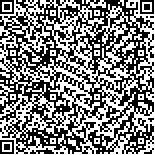刘志超,李承晏,毛善平.亚低温治疗急性重症脑血管病的神经电生理研究[J].中华物理医学与康复杂志,2003,(5):.-
扫码阅读全文

|
| 亚低温治疗急性重症脑血管病的神经电生理研究 |
|
| |
| DOI: |
| 中文关键词: 低温 诱发电位 脑血管病 |
| 英文关键词: Hypothermia Evoked potentials Cerebrovascular disease |
| 基金项目:湖北省科委科研资助项目(No.952P1902) |
|
| 摘要点击次数: 5353 |
| 全文下载次数: 5347 |
| 中文摘要: |
| 目的通过诱发电位(EP)监测,探讨亚低温治疗急性重症脑血管病的疗效。 方法将62例急性重症脑血管病患者随机分为亚低温组和对照组,亚低温组应用冰毯机将患者肛温控制在34~35℃,持续48 h;对照组不应用亚低温治疗,其他治疗方法两组相同。于治疗前、治疗后30 min、24 h、72 h、120 h监测正中神经短潜伏期体感诱发电位(SLSEP)和脑干听觉诱发电位(BAEP)。 结果治疗后30 min、24 h、72 h、120 h亚低温组及对照组SLSEP的N13-N20峰间潜伏期(N13-N20IPL)分别为(7.84±0.67)ms、(7.13±0.61)ms、(6.88±0.55)ms、(6.52±0.51)ms和(8.35±0.70)ms、(8.05±0.66)ms、(7.92±0.58)ms、(7.74±0.57)ms,两组比较亚低温组各时段均较对照组同时段短,且差异有显著性意义,P<0.05;治疗后30 min、24 h、72 h、120 h亚低温组及对照组BAEP的I-V波峰间潜伏期(I-VIPL)分别为(5.10±0.47)ms、(4.96±0.60)ms、(4.78±0.49)ms、(4.62±0.50)ms和(5.59±0.66)ms、(5.48±0.52)ms、(5.42±0.55)ms、(5.30±0.53)ms,两组比较亚低温组各时段也均较对照组同时段短,且差异有显著性意义,P<0.05。 结论亚低温能有效改善急性重症脑血管病患者异常的神经电生理指标,对于急性重症脑血管病的神经细胞有明显的保护作用。 |
| 英文摘要: |
| Objective To evaluate the effect of mild hypothermia on acute cerebrovascular diseases. MethodsSixty-two cases of severe cerebrovascular diseases were randomized into hypothermia group and control group. In hypothermia group the patients were cooled to 34~35℃ for 48h ,while the patients in the control group treated by routine methods. Median nerve short latency somatosensory evoked potentials (SLSEP) and brain-stem auditory evoked potentials (BAEP) were recorded before cooling and 30 minutes, 24, 72, and 120 hours after cooling. The changes of EP were analyzed statistically. ResultsAfter treatment with mild hypothermia, the N13-N20 interpeak latency (IPL) of SLSEP and I-V IPL of BAEP were significantly reduced as compared with those of the control group (P<0.05). ConclusionThe results indicate that mild hypothermia can offer neuroprotection for the patients with severe cerebrovascular disease, and improve their prognosis. |
|
查看全文
查看/发表评论 下载PDF阅读器 |
| 关闭 |